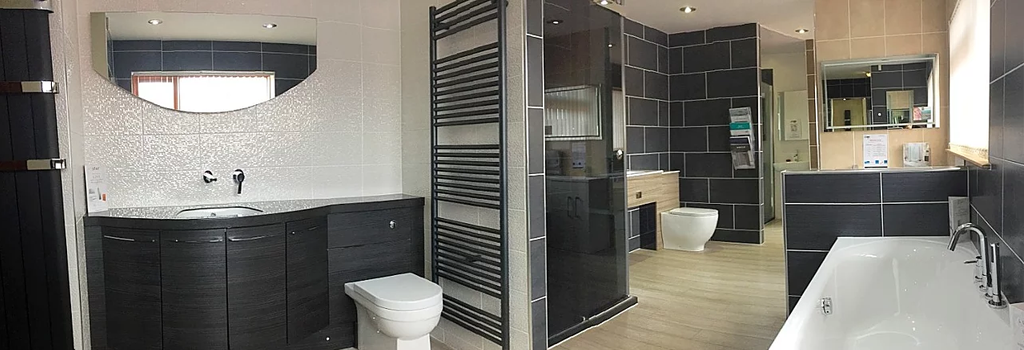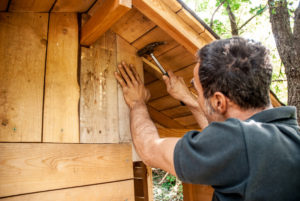Overview of Sapele Interior Doors
Sapele interior doors offer a sophisticated alternative for enhancing home aesthetics. Derived from the Sapele tree, they stand out for their rich colour and robustness.
What is Sapele Wood?
Sapele wood comes from the Sapele tree, a member of the mahogany family. It’s known for its reddish-brown hue, interlocked grain, and fine texture. This tropical hardwood is native to Africa, primarily found in countries like Nigeria, Ghana, and Côte d’Ivoire. Kiln-dried sapele wood tends to have a density of around 640 kg/m³, making it both sturdy and durable.
Benefits of Sapele Wood for Interior Doors
Aesthetic Appeal: Sapele wood’s unique grain patterns and deep reddish-brown colour enhance any interior space. Example doors feature intricate grain interlocking that adds visual interest.
Durability: Sapele wood resists wear and tear, making it ideal for high-traffic areas. Sapele doors offer longevity, giving homeowners peace of mind with minimal maintenance.
Stability: Unlike some hardwoods, sapele wood responds well to changes in humidity and temperature. This makes it an excellent choice for interior doors that need stability.
Workability: Sapele wood is easy to machine, cut, and finish. Manufacturers find it straightforward to create detailed designs and smooth surfaces on sapele doors.
Longevity and Strength
Sapele interior doors promise long-term performance due to their inherent qualities. Example uses include entrances to living rooms and bedrooms, where daily use is common.
Summary
Sapele interior doors provide a perfect blend of beauty and practicality. Using sapele wood not only enhances home aesthetics but also ensures that the doors remain durable and stable over time.
Design and Features
Sapele interior doors boast a rich aesthetic and robust construction. With various styles available, they can complement any home’s decor.
Veneered Flush Doors
Veneered flush doors combine beauty and practicality. These doors feature a thin layer of sapele veneer bonded over a core material. This construction method provides a cost-effective solution without sacrificing visual appeal. Veneered flush doors can be easily customised to suit different design preferences, making them versatile and adaptable.
Sapele Veneer vs. Solid Sapele Doors
When comparing sapele veneer and solid sapele doors, both offer distinct advantages. Sapele veneer doors are lightweight and more affordable. They allow for diverse design options due to the flexibility of veneering. On the other hand, solid sapele doors provide unmatched durability and a premium feel. These doors showcase the full depth of Sapele’s natural grain and colour, ensuring lasting beauty and strength.
Suitability for Different Rooms
Sapele interior doors add elegance to various spaces within a home. They adapt well to different room environments due to their durability and aesthetic appeal.
Ideal Rooms for Sapele Doors
Sapele doors work well in several rooms, enhancing both functionality and style.
-
Living Rooms and Dining Rooms: These rooms benefit from the rich colour and unique grain of sapele doors, creating a warm, inviting ambience.
-
Bedrooms: The natural beauty of Sapele provides a luxurious touch that complements a restful environment.
-
Home Offices: Sapele doors contribute to a professional look, elevating the workspace’s overall design.
-
Entryways and Hallways: Given their durability, sapele doors sustain the wear and tear of high-traffic areas without losing their elegance.
Considerations for Moisture-Rich Areas
Sapele doors perform well with proper treatment but require extra care in moisture-rich environments.
-
Bathrooms: In these areas, ensure adequate ventilation and consider sealing the door to protect against humidity, which could affect the wood over time.
-
Kitchens: The fluctuating moisture and temperature conditions necessitate sealing and regular maintenance to maintain the door’s integrity and appearance.
With appropriate care, Sapele interior doors maintain their beauty and functionality even in moisture-prone spaces.
Maintenance and Care
Sapele interior doors, while durable, require regular maintenance to retain their beauty. Proper care ensures longevity and keeps them looking their best.
Cleaning and Polishing
Cleaning sapele doors involves using a soft cloth. Wipe the surface gently to remove dust. For more thorough cleaning, use a mild soap solution. Avoid harsh chemicals, as they can damage the wood. Polish the doors monthly with a wood polish. This maintains their sheen and enhances their natural grain.
Repair and Longevity
Address minor scratches with a touch-up marker or matching wood filler. Sand the area lightly and apply the filler, then finish with a small amount of wood polish. For deeper damage, consider professional repairs. Regularly inspect the doors for wear and tear. This proactive approach will ensure they last for years.
To prolong the life of sapele doors, ensure proper ventilation in moisture-prone areas. Use dehumidifiers in bathrooms and kitchens. This prevents warping and maintains the wood’s integrity.
Installation Tips
Proper installation of sapele interior doors ensures optimal function and enhanced aesthetics. Following essential steps during installation can lead to a seamless fit and long-lasting performance.
Preparing the Doorframe
Ensure the door frame is square and plumb before installation. If the door frame isn’t perfectly aligned, the door might not fit correctly or operate smoothly. Clean the frame thoroughly to remove any dust or debris that might interfere with alignment.
Sizing and Fitting
Measure the door opening accurately to ensure a precise fit. Subtract 3mm from both the width and height measurements to allow for easy opening and closing. If trimming is necessary, cut from the bottom and hinge side of the door to maintain the integrity of the Sapele grain.
Painting and Finishing
Sand the door surface lightly with fine-grit sandpaper to prepare it for finishing. Apply a wood primer first for better paint adhesion. For a natural look, use clear varnish or oil to highlight the sapele grain, applying multiple coats and sanding lightly between each one for a smooth finish.
Key Takeaways
-
Elegant Aesthetic: Sapele interior doors offer a rich, reddish-brown hue and unique grain patterns, enhancing any home decor with a touch of timeless elegance.
-
Durability and Stability: Sapele wood is known for its robustness and resistance to wear and tear, making it ideal for high-traffic areas and ensuring long-term performance.
-
Versatile Design Options: Available in both veneered and solid forms, Sapele doors can be customised to suit various styles and preferences, providing flexibility in home design.
-
Room Suitability: Sapele interior doors are ideal for living rooms, dining rooms, bedrooms, and home offices, but they require extra care in moisture-rich areas like bathrooms and kitchens.
-
Maintenance Tips: Regular cleaning with a soft cloth, avoiding harsh chemicals, and monthly polishing are essential for maintaining the doors’ beauty and longevity.
-
Installation Essentials: Proper preparation of the door frame, accurate sizing, and careful finishing are crucial for optimal functionality and a seamless fit.
Conclusion
Sapele interior doors truly stand out for their distinctive beauty and robust durability. Their rich colour and unique grain add a touch of luxury to any home, old or new. These doors don’t just look good; they also offer long-lasting performance and stability, even in varying humidity and temperature.
While they require a bit of maintenance to keep their shine, the effort is minimal compared to the elegance they bring to our living spaces. From living rooms to high-traffic hallways, sapele doors adapt beautifully, enhancing both functionality and style.
Proper installation is crucial to maximise their benefits. Ensuring the door frame is square and plumb, and preparing the door surface correctly, will help maintain their aesthetic appeal and functionality. In essence, Sapele interior doors are a smart investment for anyone looking to elevate their home’s decor with a blend of beauty and practicality.
Frequently Asked Questions
What is Sapele wood, and where does it come from?
Sapele wood originates from the Sapele tree, a member of the mahogany family, typically found in Africa. It is known for its rich reddish-brown colour and interlocked grain, making it a popular choice for interior doors.
What are the key benefits of Sapele interior doors?
Sapele interior doors offer aesthetic appeal, durability, and stability in varying humidity and temperature. They provide a timeless elegance and can elevate the style of both old and new homes.
How do Sapele veneer doors differ from solid Sapele doors?
Sapele veneer doors feature a thin layer of Sapele bonded over a core material, making them lightweight and affordable. Solid Sapele doors are more durable with a premium feel, showcasing the full depth of Sapele’s natural grain and colour.
Are Sapele interior doors suitable for all rooms?
Yes, Sapele interior doors are versatile and adapt well to different rooms including living rooms, dining rooms, bedrooms, and home offices. However, extra care is needed in moisture-rich environments like bathrooms and kitchens.
How should I maintain and care for Sapele interior doors?
Regular cleaning with a soft cloth and mild soap solution is recommended. Monthly polishing can enhance their natural sheen. Minor scratches can be addressed with touch-up markers or wood filler, while deeper damage may require professional repairs.
What should I consider during the installation of Sapele interior doors?
Ensure the door frame is square and plumb, accurately measure the door opening, and leave a slight margin for easy operation. Sand the door surface and apply a wood primer or clear varnish to enhance its natural grain.






